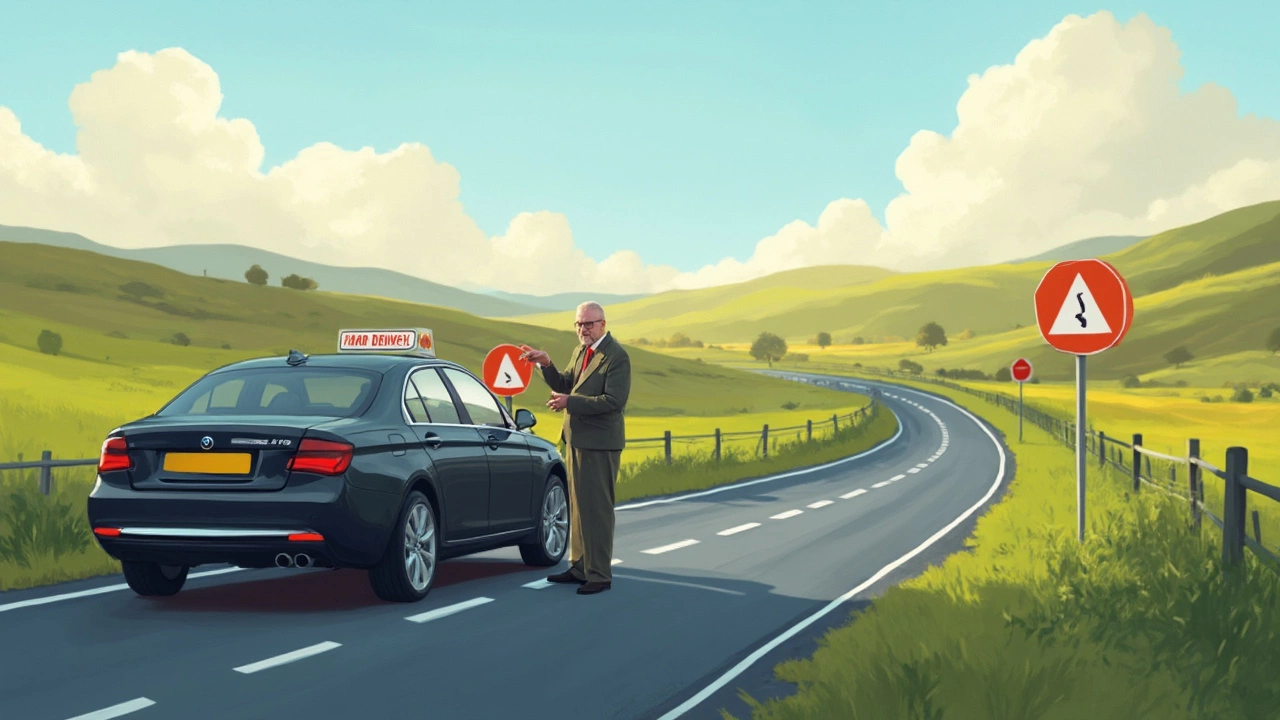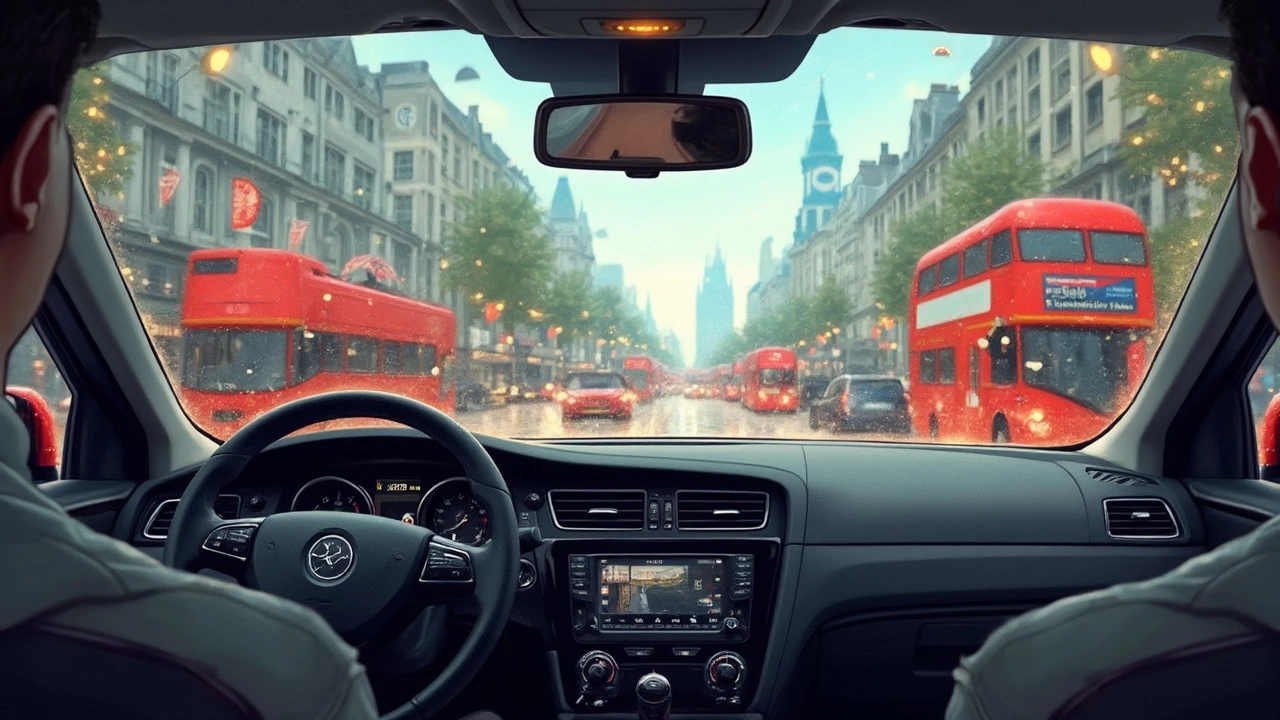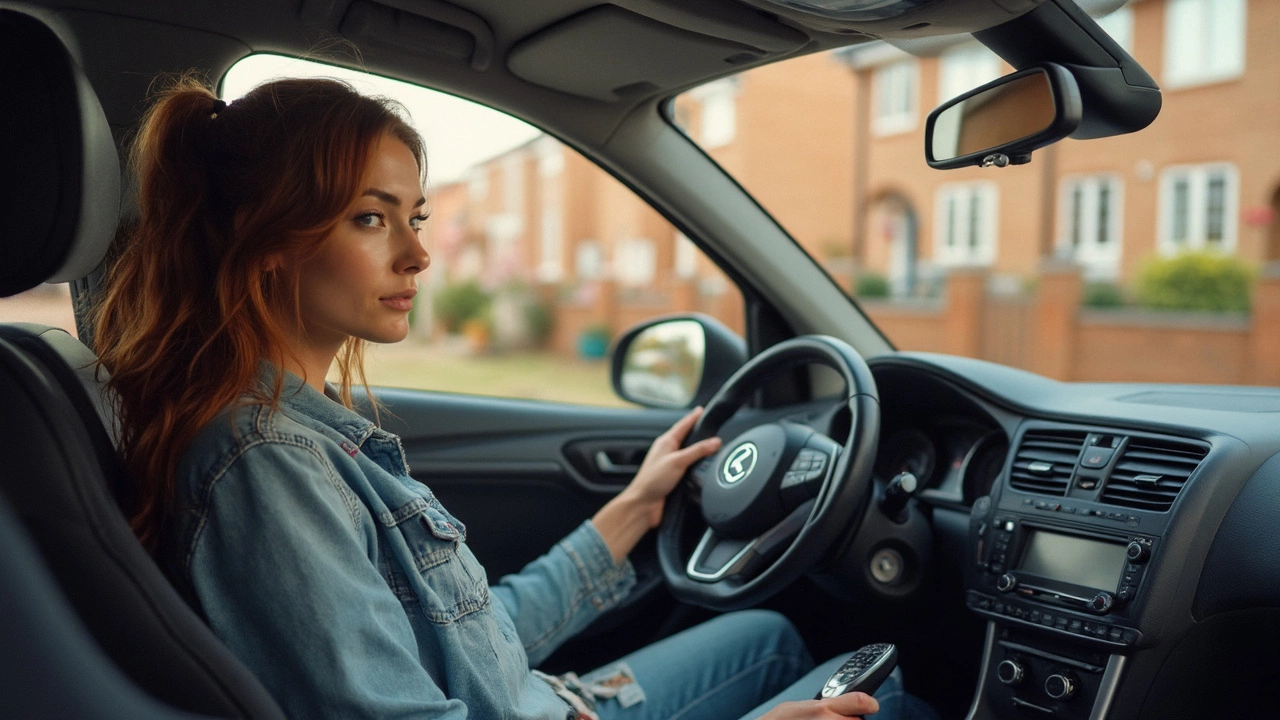Driving an automatic car can feel like a game-changer, especially if you’ve spent any time wrestling with a manual transmission. It's a bit like switching from an old-school flip phone to the latest smartphone—simpler, less distracting, and just overall easier to manage. But don't feel bad if you're a tad unsure about it. You're not alone!
First things first, let’s tackle the gear shift. Unlike a manual car, where you're juggling a clutch and gear stick like you're in some sort of foot and hand yoga class, an automatic scoffs at such complexity. It’s all about the P, R, N, and D here—Park, Reverse, Neutral, and Drive. Oh, and there’s L for low gear, if you’re going uphill or needing a bit more torque. Don’t worry, you’ll get the hang of it before you know it.
Now, starting the car is easy-peasy. Make sure it's in Park or Neutral, foot on the brake, and simply turn the key or push that fancy start button. There's no need to fret about stalling. Automatic cars are built to keep things smooth and straightforward, so you can focus more on where you’re headed rather than fiddling with gears.
- Understanding the Gear Shift
- Starting the Car
- Navigating the Road
- Smooth Transitions: Tips and Tricks
- Safety and Common Pitfalls
Understanding the Gear Shift
Alright, so you're probably wondering what's up with these letters on the gear shift—what do they even mean and why should you care? In an automatic driving experience, the gear shift is your best friend for smooth rides.
First up is P for Park. This setting locks the transmission, ensuring your car doesn't roll away while you're parked. Always shift to Park before shutting off the car.
Next, R is for Reverse. Not a surprise here—use this when you need to back up. But remember, you must come to a complete stop before switching to Reverse to avoid damaging the car.
N stands for Neutral. Neutral is like a freewheeling mode. It's mostly used when you're towing the car or at long stops, like waiting at a lengthy train crossing.
Then there's D for Drive. This is your go-to when cruising down the road. The car will automatically shift through gears as speed increases, which is kinda the whole point of driving an automatic.
Finally, there's L for Low Gear. This setting gives you extra power for situations like towing a trailer or navigating steep hills. It's handy, but most folks rarely use it unless they’re dealing with challenging terrain.
Most modern cars do a fantastic job of shifting at the right moments, giving you a seamless experience. In summary, while each letter has its place, Drive and Park are what you’ll use most of the time. Easy-peasy, right?
Starting the Car
Kicking off your journey with an automatic car isn't rocket science. It’s all about getting familiar with a couple of steps that will soon become second nature. Let's break it down nice and simple.
- Check the Gear: Before you even think about turning the key or pressing that push-start button, make sure the car is in Park (P) or Neutral (N). This might sound obvious, but trust me, it’s the kind of detail that has saved many from a minor heart attack—or an embarrassing stall.
- Foot on the Brake: Now, place your foot firmly on the brake pedal. It’s an automatic ritual, your car won’t even think about starting unless it knows you’ve got things under control. Some newer automatic cars also require this to disengage the security system.
- Ignition and Go: Turn the key or hit that snazzy start button. The engine should fire up with zero drama. Now, switch the gear to Drive (D) or Reverse (R) depending on whether you’re heading out or backing up.
Of course, cars have come a long way, and there are new models coming out every year that can start from smartphone apps (talk about futuristic!). But for the most part, these basics will get you from A to B without a hitch.
As a fun tidbit, here’s a cool little stat: about 96% of all new cars sold in the United States are equipped with automatic transmissions. So, you’re definitely not alone in your drive towards convenience and ease!

Navigating the Road
Alright, you've got the car started and you're ready to hit the road. Driving an automatic car can feel like a walk in the park once you crack the code of its straightforward system. Let's break down how to navigate the road without breaking a sweat.
First, shift into Drive (that's the 'D' on your gear shift). Keep your foot on the brake while shifting to prevent any sudden starts. Once in Drive, slowly ease off the brake and gently press the accelerator pedal to get rolling. Automatic cars manage the gears for you, making it not only convenient but so much smoother when you're stuck in stop-and-go traffic.
When it comes to turning, it doesn't differ too much from any other car. Make sure your signals are on point—flick that lever up or down, depending on whether you're turning right or left. Remember to slow down before taking the turn for a safe and smooth transition. The car will automatically adjust the gears during the turn, so no worries there.
Driving on different terrains? Automatic cars simplify the experience. Heading up a steep hill? Consider moving the gear shift to 'L' or '2', which some cars have for extra power. This setting gives you more control for climbs and even descents, preventing unnecessary wear and tear.
- Keep your distance: Always maintain a safe following distance. Automatic cars do some work for you, but human judgment is key in heavy traffic or bad weather.
- Use two feet wisely: Right foot on the brake and accelerator, left foot should just chill. It’s tempting to use both feet, but that can lead to accidental simultaneous braking and accelerating.
- On reverse: Switch to 'R' for reverse, but always look and check your mirrors before backing up.
Oh, and here's a fun fact: on a global scale, automatic transmissions continue to gain popularity. Learning to drive automatic might not just make you a more relaxed driver, but also one who’s in step with modern trends.
Smooth Transitions: Tips and Tricks
Making every ride smooth in an automatic car isn’t magic—it’s down to a few simple tricks. The beauty of an automatic driving experience is the ease it brings to handling pesky traffic, those sudden stops, and even uphill journeys.
Let’s start with the golden rule of gentle acceleration and braking. Slamming your foot on the pedal might work in the movies, but it’s not recommended for real life. Instead, aim for gradual acceleration to prevent the car from jerking forward unexpectedly, and keep things calm and collected when you're coming to a stop by easing into the brake.
Want to make your ride even more seamlessly smooth? Pay attention to your positioning on the road. Stay aware of your surroundings by consistently checking mirrors and maintaining a safe distance from the vehicle in front of you. This gives you more reaction time and enhances the overall flow of your journey.
Here’s a cool fact: modern cars come equipped with adaptive cruise control—this nifty feature helps maintain a set speed and even adjusts to the flow of traffic ahead of you. It’s like having a co-pilot who keeps an eye on things, especially on long freeway stretches.
Here's a quick checklist to ensure you’re mastering that smooth driving experience:
- Always start in 'Drive' mode unless you're specifically reversing or parking.
- Use 'Low' gear if you need extra power on steep hills—this reduces strain on the engine.
- Engage the handbrake when parked, even on level ground.
- Stay alert to how your car 'feels' during drives—any unusual noises or feels might need checking.
A little trivia to impress your friends: did you know that in 2023, about 98% of the new cars in the U.S. were automatic? That’s a testament to how user-friendly they’ve become over the years!
By adopting these tips, your transition into smooth, beginner-friendly driving can be as breezy as a Sunday drive on an open road. It’s about comfort, safety, and a bit of practice—before long, you’ll wonder how you ever coped with all those manual gears!

Safety and Common Pitfalls
When it comes to automatic driving, safety is a big deal. It might seem like a walk in the park compared to a manual, but there are still common mistakes that can trip up even the most confident new driver. Let’s break them down so you can cruise with confidence.
First off, many newbie automatic driving enthusiasts forget about the importance of using both feet. Unlike a manual, with automatic driving, you should only use your right foot for both the accelerator and brake. Left-foot braking can lead to confusion in emergencies, and it's a habit worth dropping early on.
Speed management is another area where folks can slip up. Automatics often accelerate smoothly and quietly, which can make it easy to exceed speed limits without realizing it. Always keep an eye on your speedometer.
"Driving an automatic car requires the same attention to the road as driving any other vehicle. It's crucial to stay alert and aware," says New Zealand Transport Agency's driving expert, Sarah Thompson.
Parking is another task where errors occur. Automatics usually have a 'Park' gear. Don’t forget to engage it before leaving the car. Skipping this step can lead to unwanted surprises like your car rolling away when you least expect it!
Here's a quick rundown of common pitfalls and how to avoid them:
- Trust in the technology: Automatics do a lot of thinking for you, but don’t get too comfy. Stay aware and in control.
- Relying too heavily on brakes: Use the engine to help slow down by easing off the gas pedal on long descents instead of riding the brakes.
- Ignoring maintenance: Automatics need regular check-ups. A well-serviced car runs smoother and is safer.
Remember, while driving an automatic might be less complicated than a manual, the responsibility to drive safely remains the same. Keep these tips in mind, and you’ll be set for a smooth, enjoyable ride.

